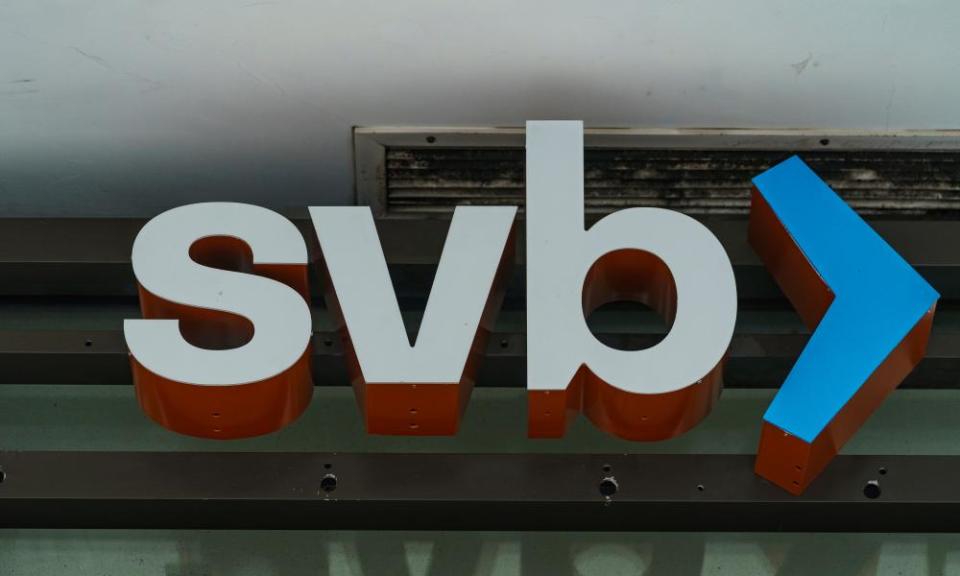Consider yourself lucky if your small business worked with Silicon Valley Bank

If your business banked with Silicon Valley Bank then count yourself as very, very lucky.
Yes, your bank failed to protect your money. Its managers made unwise investment decisions, it was poorly supervised and poorly regulated. But you still got your money back.
True, there were some scary moments. Customers had their accounts frozen. Merchants at Etsy and Shopify were caught short. Others had their payroll checks stopped. It was almost a catastrophe. Almost.
Related: The SVB debacle has exposed the hypocrisy of Silicon Valley | John Naughton
But then the federal government stepped in and “in an effort to shore up confidence in the banking system”, the treasury department, Federal Reserve and Federal Deposit Insurance Corporation (FDIC) announced that all – all! – of the bank’s customers would have their money protected and accessible.
“Small businesses across the country that had deposit accounts at these banks can breathe easier knowing they’ll be able to pay their workers and pay their bills,” Joe Biden said in a statement shortly after the collapse. “And their hardworking employees can breathe easier as well.”
Phew! Small business customers at Silicon Valley Bank dodged a bullet there. And lucky for them too that THEIR bad decisions didn’t compound the bad decisions made by the bank’s management.
Yes, that’s right. THEIR bad decisions. Putting all your eggs in one basket is never a good idea – that’s why there is a cliche about it. Every client I know is familiar with the $250,000 FDIC insurance coverage that protects their cash at a financial institution. And, while most small businesses have balances less than that amount in their accounts, a large number of my clients and companies hold funds in excess of this insurance limit at their respective banks. It’s estimated that 90% of Silicon Valley Bank’s deposits – many of them held by small businesses – were uninsured, an astounding figure when you consider the risks.
This is lazy, complacent, bad decision-making. The money at a small business is not only money that is owed to investors and partners but it’s also used to pay employees and suppliers, who also have employees. The owners of those businesses – like any business – have a fiduciary duty to ensure that their stewardship over the company’s cash is prudent.
What they should have been doing was manage their risk better. They should have swept their excess, non-liquid cash out of that one institution and spread it among others. They should have had these funds in government securities, certificates of deposits with other banks and mutual funds with various investment firms. Their accountants should have been calculating how much funds were needed and how much could be tied up elsewhere.
If 2008 taught us anything, it’s that banks fail
Many of Silicon Valley Bank’s customers are in the tech industry, and I get it that the industry has been experiencing significant turmoil thanks to the rising cost of capital and the tightening of credit. I warned about this in December and most of my clients in that industry saw the risks earlier than that. With hindsight we can see how Silicon Valley Bank collapsed. But that doesn’t let these depositors off the hook. If 2008 taught us anything, it’s that banks fail. Holding funds significantly in excess of $250,000 at any bank is a big, irresponsible gamble.
The federal government’s intervention is a controversial move that leaves a lot of unanswered questions. Will they do this again if more banks fail? How can they do it for one bank and not for others? Will the costs ultimately be borne by taxpayers? Should we just ignore that $250,000 FDIC insurance now that the federal government appears to have rendered it meaningless?
“The Fed has basically just written insurance on interest-rate risk for the whole banking system,” Steven Kelly, a senior research associate at Yale’s program on financial stability told the New York Times. “It lowers the threshold for the expectation of where emergency steps kick in.”
Frankly no one knows what’s going to happen next. What I do know is that millions of small businesses in this country have their cash at more than 4,000 banks. And I’m betting that many of these companies have more than $250,000 in the bank too. So if you’re one of the owners of these companies you may not be as lucky as Silicon Valley Bank’s customers the next time this happens (and there will be a next time, plenty of next times).
“I’m a steward of other people’s money who have trusted me with their capital and I’m going to do what it takes to survive,” said a Silicon Valley Bank customer and the owner of a winery in Oregon. She seems to have learned her lesson and vows to be “more cautious” in the future. Let’s hope others do the same.

 Yahoo Finance
Yahoo Finance 